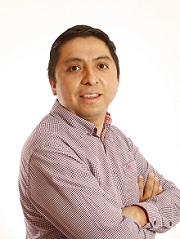Octavio Castillo
Primary tabs
Biography
I am full-time professor at the "Department of Computer Architecture" at the Polytechnic University of Catalunya (UPC) and associate researcher at the "Wave Phenomena Group" within the CASE department at the BSC. I hold a PhD in Computer Architecture from the Polytechnic University of Catalunya (2017), which was awarded an Excellent Cum Laude International Mention. My PhD thesis focused on electromagnetic methods in geophysics and their numerical modeling using novel HPC algorithms in Python.
My research centers around numerical methods applied to geophysics and their parallel programming on supercomputing architectures. The main outcomes of my research include 4 international research stays (in Finland, France, and the USA), 20 peer-reviewed papers, over 60 international conferences, and the PETGEM code (http://petgem.bsc.es), of which I am the main developer. PETGEM is a new HPC tool for electromagnetic modeling currently utilized by the "Department de Geodinàmica y Geofísica" at the University of Barcelona, the "Fusion group" at BSC, and the "Wave Phenomena Group" at BSC. In 2017, I was honored with the JCC2015-BSC prize for "Your Thesis in Three Minutes" (3TM).
I am a member of the National System of Researchers of CONACyT (Level I, valid until 2027) and a member of the Mexican Supercomputing Network. The quality of my teaching has been certified by ANECA and AQU.
Educació
2008 - 2011 | Master in networks and telelecommunications. Master Thesis: "Performance evaluation of AODV & DSDV routing protocols in a wireless sensor network for structural health monitoring". Atenas Veracruzana University (UAV), Xalapa, Veracruz, Mexico.
Research
in the subsurface. As a consequence, the 3D CSEM FM has real application in many areas such as hydrocarbon and mineral exploration, reservoir monitoring, CO2 storage characterization, geothermal reservoir imaging and many others due to there quantities often displaying conductivity contrasts with respect to their surrounding sediments. However, the 3D CSEM FM at real scale implies a numerical challenge that requires an important computational effort, often too high for modest multicore computing architectures, especially if it fuels an inversion process. In this regard, the 3D CSEM FM is a key application that can benefit strongly from algorithmic and computational improvements.
Main Research Lines
Teaching
- Introduction to computers
- Computer architecture
- Structure of computers
- Introduction to parallel and distributed programming
- Analysis of algorithms
- Computer architecture
- Distributed systems
- Applied mathematics
- Algebra I

